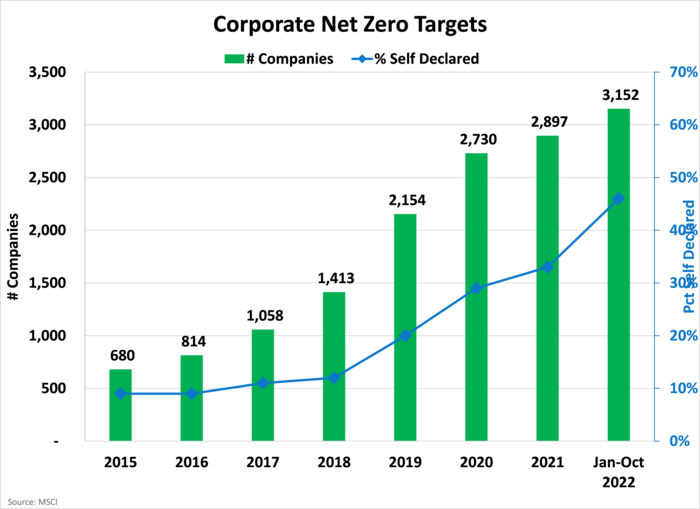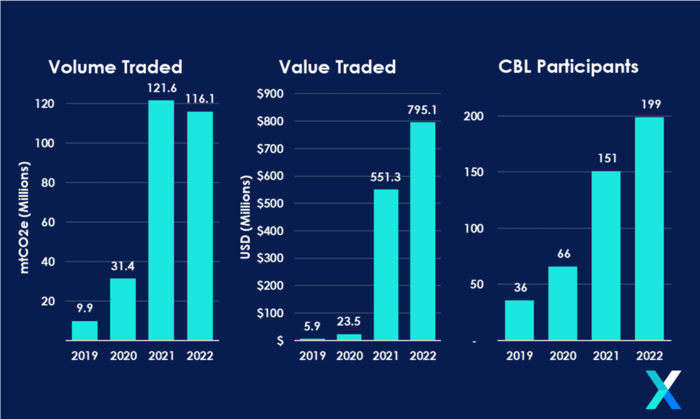
One thought I want everyone to try to think outside the box on—is executive compensation.It’s no secret that as the average American worker’s annual salary has been negative with inflation, executive compensation has grown exponentially.I’ve read studies that have shown that (of publicly listed companies) executive pay is on average 670 times greater than the average employee.In fact, the media in Canada is jumping all over a story that says Canada’s highest-paid CEOs made an average of $14.3M in 2021, shattering records.
- According to another report, the 100 best-paid chief executive officers in Canada now make 243 times what the typical worker earns.
- By 9:43 a.m. on January 3rd, Canada’s richest CEOs have already earned the average worker’s annual salary.
Like all reports, the devil is in the details, but it’s gotten out of hand—and nobody will argue with that.
Is Carbon Tied Compensation Coming to The S&P500?
What if, for example… Regulators or investors can legally tie executive compensation to not only financial metrics, which are verified by third-party accounting firms like Deloitte, PWC, or Ernst & Young, but also to the corporation’s emissions liability.That means executive compensation is directly tied not just to financials but also emissions: The corporations’ emissions footprint.The reality is somebody will eventually have to pay for the pollution created in some manner. Nobody will disagree that emissions and pollution are not good for the environment.So, a very simple and logical way to enforce that a company meets its emissions criteria and eventually does get to net zero is tied to the executive compensation to both financials and emissions.If the emission targets are not met, the cost to do so comes out of the executive compensation. Meaning, if the company doesn’t hit its targets, the upper brass who make the decisions don’t get paid either.Today, it would be tough to argue that most executives are getting rich while leaving the world in a more polluted state.It’s time for the executives to be made accountable and this is a trend you will see over the next decade grow. Then eventually becomes law.Marin have you lost your mind?I can’t tell you how many board rooms I’ve sat in, Chairmans and CEO’s I’ve talked to, regulators I’ve heard, and reports I’ve read.This will be coming sooner rather than later. And investors must prepare for it.
Checking in on the Carbon Market…
Carbon prices have corrected since their mountainous highs from a year ago. It caught financial markets by small storm and attracted investors and capital alike.What usually happens after a price spike is the “chasers” all pile in. Then, like clockwork, everyone loses faith and the world is ending.I’ve had many investors email me and tell me they have lost hope in carbon credits because the price has dipped from its highs in 2021.
We’ve heard this song before in uranium. Here’s what happened…
Uranium went as high as $137/lb in 2007 and went to a low of $17 in 2016 (the exact month I pitched and convinced a founder to create what became a major uranium player.This company went ahead and within 30 months, gave us early investors to make up to 680% – in what began as a lights-out uranium bear market.The point is, uranium has suffered a much worse (88% down) from 2007 to 2016 and is now in the $48/lb price range.
- Carbon Credit prices have taken a big hit from their highs in 2021, but the prices of high-quality carbon credits are nowhere near the big price declines experienced by other commodities, such as uranium, rare earth, tungsten, and yes even gold.
- Gold in the 1980s experienced over 60% correction.
I believe 2023 will be another tough year for carbon credits.But as we did with the lows of uranium between 2016 and 2019 (we made a big bet on a pair of uranium companies that returned multiple times our money), there will be a significant opportunity and long-term upside in the carbon credit market.
Record Corporate Net Zero Targets
Some investors on the sidelines think corporates will do the bare minimum, and only meet NDC-required targets. I don’t see it. Some corporates will elect to go that route. However, immense pressure continues to be put on banks and institutions which act as capital providers to corporates with no emissions strategy. Many of the world’s largest institutional investors are putting gates in place that limit – or prevent – capital provision to large polluters. The lack of capital will be a major detriment to companies doing the bare minimum, and I do not expect it to be the norm.What we are seeing in real-time is exponential growth in net zero pledges. Over 3000+ companies now have a net zero target, a near three-fold increase in 5 years.

Carbon Market Value Growth Exploded Higher in 2022
In 2022, the voluntary carbon market experienced growth despite periods of low trading activity.According to reports, the value of credits traded on CBL surged by 44% to over $795 million USD, while the volume traded reached 116 million tonnes, which was only 6% lower than the previous year’s record total.The number of firms conducting transactions in CBL’s spot market also saw an increase, rising to almost 200 firms, which is a 32% rise compared to 2021.

Investors that are reading this know that I’m a BIG fan of precious metals, base metals and energy.But the carbon sector has now grown to the largest percentage of my net worth that it’s ever been.We are incredibly early to one of the most impactful financial sectors you will ever see in your lifetime.And either I’m wrong and this fizzles, or this is a once in a generation type investment opportunity.My money is heavily on the latter.Regards,Marin Katusa
Details and Disclosures
Investing can have large potential rewards, but it can also have large potential risks. You must be aware of the risks and be willing to accept them in order to invest in financial instruments, including stocks, options, and futures. Katusa Research makes every best effort in adhering to publishing exemptions and securities laws.
By reading this, you agree to all of the following: You understand this to be an expression of opinions and NOT professional advice. You are solely responsible for the use of any content and hold Katusa Research, and all partners, members, and affiliates harmless in any event or claim.
If you purchase anything through a link in this email, you should assume that we have an affiliate relationship with the company providing the product or service that you purchase, and that we will be paid in some way. We recommend that you do your own independent research before purchasing anything.






